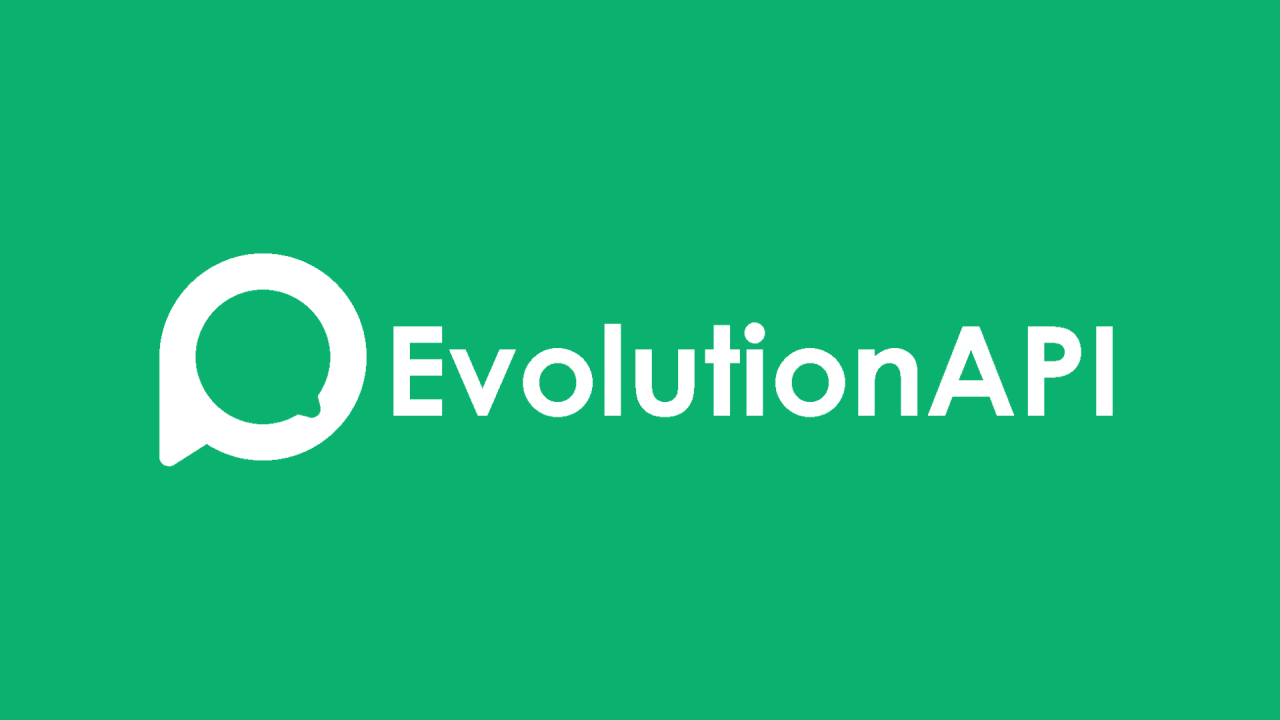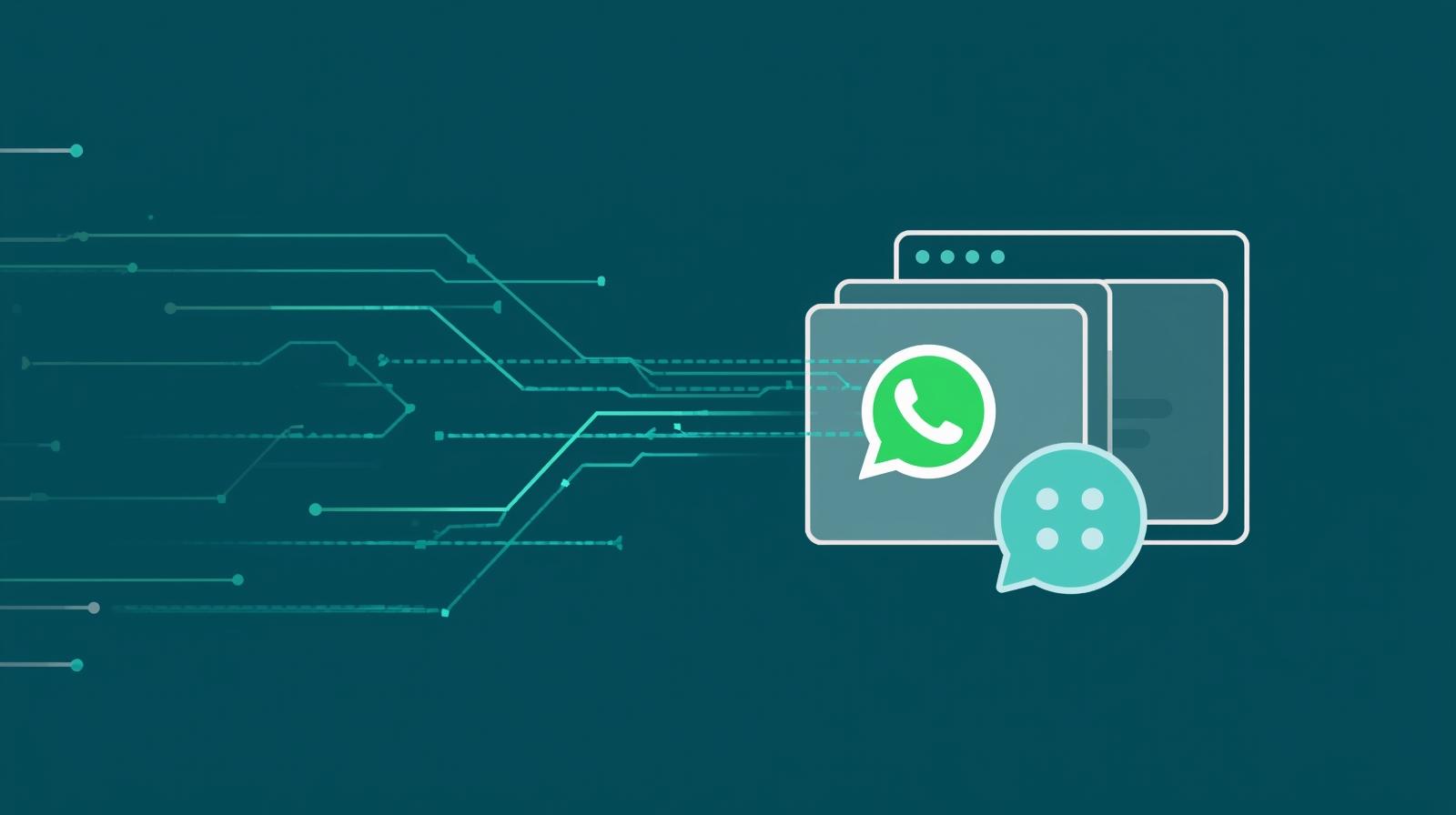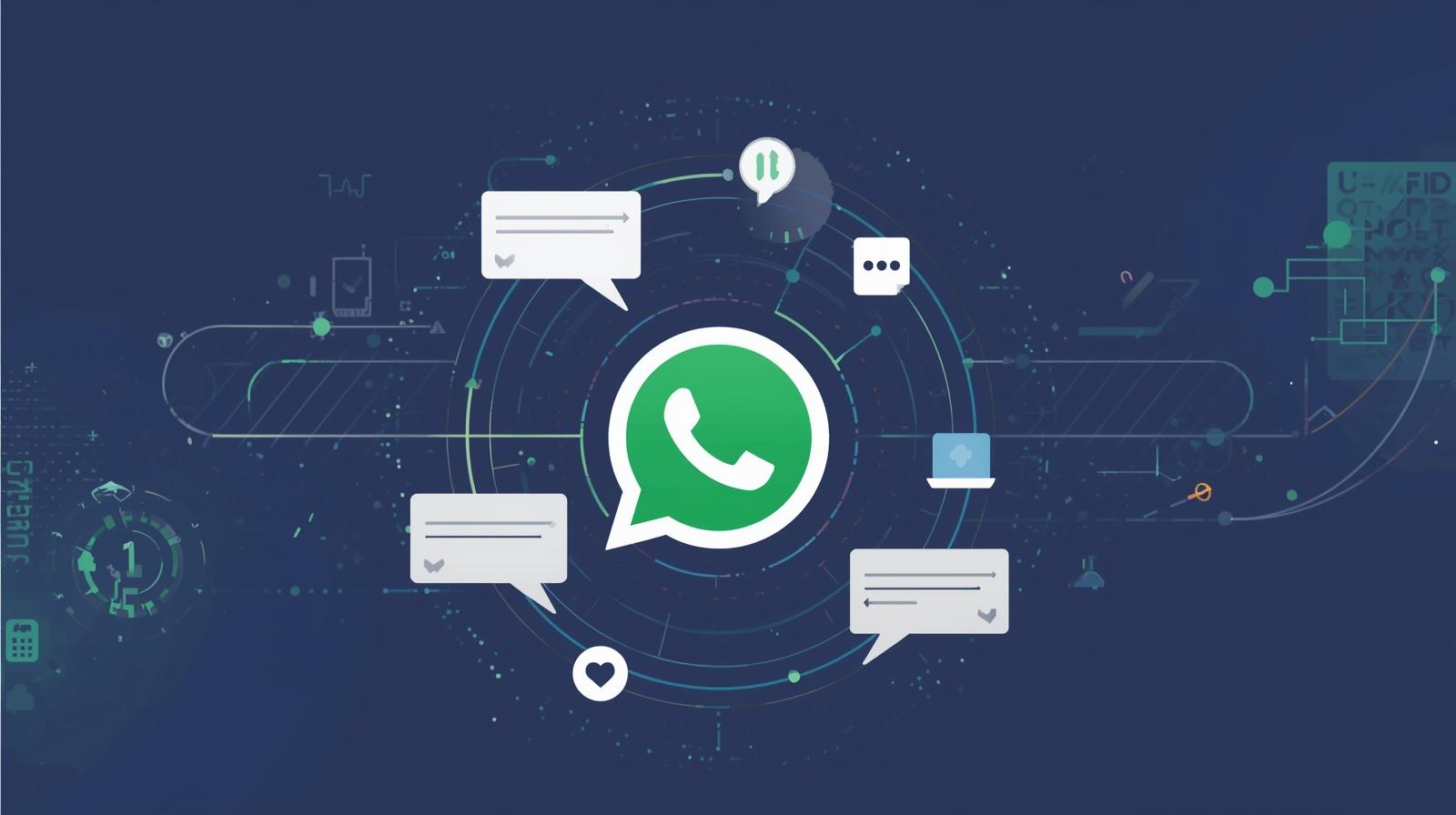
Customer expectations for communication have fundamentally shifted. We've seen a dramatic rise in digital interactions, and with it, a demand for responses that are not just instant but also intelligent. Salesforce research often highlights this trend, showing that customers increasingly expect companies to understand their needs proactively. This sets the stage for why businesses, particularly in the United States, must refine their messaging automation strategies for 2025 and beyond.
Understanding the Shift in Automated Messaging for 2025
The journey of automated messaging has been one of rapid evolution. Not long ago, chatbots were primarily rule based, adept at handling straightforward FAQs but little else. Think of those early website pop ups that could only point you to a general help page. Now, in 2025, the landscape is vastly different. US consumers, accustomed to the seamless experiences offered by digital leaders, expect interactions that are immediate, deeply intelligent, and strikingly personalized. They can spot a clunky, impersonal bot a mile away, and their patience for such experiences is thin.
Several key technological drivers are fueling this transformation. Artificial Intelligence, especially advancements in Natural Language Processing (NLP) and machine learning, is more accessible and powerful than ever. This allows systems to understand not just words but intent and sentiment. Robust API integrations are also critical, enabling smooth connections with ubiquitous platforms like WhatsApp, turning them into powerful conduits for automated, yet sophisticated, dialogue. Furthermore, the increasing capability of data analytics allows businesses to decipher complex customer behavior patterns, feeding insights back into automation logic for continuous refinement.
For US companies, adopting these advanced automation techniques is no longer a luxury but a business imperative. The benefits are tangible. We're talking about significantly improved customer satisfaction because queries are resolved faster and more accurately. There's also greater operational efficiency as automation handles routine tasks, freeing up human agents for complex, high value interactions. This naturally leads to enhanced scalability, allowing businesses to manage growing communication volumes without a proportional increase in costs. In fiercely competitive markets, sophisticated messaging automation strategies are a key differentiator, crucial for maintaining a competitive edge.
Core Strategy: Leveraging AI for Smarter Conversations

The real leap in messaging automation for 2025 lies in making conversations genuinely smarter, and Artificial Intelligence is the engine driving this. It's about moving beyond pre programmed responses to interactions that feel more natural and are far more effective. This is where AI messaging 2025 truly comes into its own, transforming how businesses engage with their customers through automated channels.
Natural Language Processing (NLP) and Understanding (NLU) in Action
At the heart of intelligent automation are NLP and NLU. These technologies are what allow a system to grasp what a customer is truly asking, even if their phrasing is informal, contains slang, or expresses subtle frustration. Imagine a customer typing, "My order is MIA, where's my stuff?!" An advanced AI doesn't just see keywords; it understands the urgency and the implied question about delivery status. This sophistication enables more human like and effective query handling, especially on widely used platforms where conversational styles dominate. The system can then provide a precise update or initiate the correct resolution flow, rather than offering a generic FAQ link.
AI for Intelligent Routing and Contextual Escalation
Not every query can or should be handled by automation alone. Intelligent systems use AI to assess the complexity of an issue and the customer's sentiment. If a problem is straightforward, the AI can resolve it autonomously. However, if the issue is complex, involves high emotional stakes, or requires human discretion, the AI can seamlessly route the conversation to the most appropriate human agent. Crucially, the full conversational context is passed along, so the customer doesn't have to repeat themselves. This optimizes agent time, ensuring they focus on issues where their expertise is most needed, and significantly improves first contact resolution rates.
Predictive AI for Proactive Customer Engagement
Why wait for a customer to reach out with a problem or a question? Predictive AI analyzes customer data, past interaction patterns, and even real time behavior to anticipate future needs or potential issues. This allows businesses to send proactive automated messages that add genuine value. For example, an e commerce company’s AI might detect that a shipment is delayed and proactively send an update with a new ETA and perhaps a small discount for the inconvenience, even before the customer notices. Or, it could send personalized offers based on browsing history, catching interest at just the right moment.
Ethical AI and Bias Mitigation in Automated Customer Communications
With great power comes great responsibility. As AI becomes more ingrained in customer communications, its ethical deployment is paramount. This means a commitment to transparency in how AI makes decisions, actively working to mitigate biases that might be present in training data, and ensuring fairness in outcomes. Customers have a right to understand why an AI responded in a certain way. Key considerations for responsible AI deployment include:
- Transparency in AI decision making processes.
- Continuous monitoring and mitigation of biases in algorithms.
- Ensuring data privacy and security in AI training and operation.
- Providing clear avenues for users to understand and contest AI driven outcomes.
Building trust in AI driven interactions is as important as the technology itself.
Core Strategy: Personalization and Contextual Engagement
If AI provides the brains for smarter conversations, then personalization and context provide the heart. In 2025, generic, one size fits all automated messages simply don't cut it. Customers expect interactions that acknowledge their individual history and current needs. Crafting personalized automated messages is key to making customers feel understood and valued, rather than just another ticket number. This involves not just knowing who they are, but what they need, right now.
Utilizing Diverse Customer Data for Hyper-Personalization
True hyper personalization draws from a rich tapestry of customer data. This isn't just about using a customer's first name. It involves leveraging information from CRM systems, detailed purchase histories, website browsing behaviors, app usage patterns, and past service interactions. For instance, if a customer frequently buys eco friendly products, an automated message could highlight new sustainable items. APIs for popular messaging platforms, including solutions that enable WhatsApp API automation, are crucial for delivering this rich, personalized content directly into the channels customers prefer, making the interaction feel seamless and relevant.
Implementing Dynamic Content and Conditional Logic in Messaging Flows
Dynamic content takes personalization a step further by allowing automated messages to adapt in real time. Based on user segments, specific triggers (like an abandoned cart), or the customer's current stage in their journey, the content of a message can change. For example, a welcome message for a new user might highlight introductory features, while a message to a long term loyal customer might offer an exclusive preview of a new service. Conditional logic ensures that the messaging flow itself is adaptive, guiding users down different paths based on their responses or data profiles, making each interaction exceptionally relevant.
Context-Aware Messaging: Delivering the Right Message at the Right Time on the Right Channel
Context is king. Understanding the user's full context—their device, their location (with consent), their recent activity on your app or website, and their interaction history across all channels—allows businesses to deliver the perfect message at the perfect moment. If a customer is struggling with a feature in your mobile app, a context aware system can trigger an automated message offering help directly within that app environment. If they've just completed a purchase, a timely thank you message with shipping information via their preferred channel reinforces a positive experience.
Balancing Deep Personalization with Stringent Privacy Considerations
The power of personalization comes with a profound responsibility to protect customer privacy. US consumers are increasingly aware of their data rights, underscored by regulations like the California Consumer Privacy Act (CCPA). As the Electronic Frontier Foundation (EFF) often highlights, transparency in data usage, clear consent mechanisms, and robust security for handling personal information are non negotiable. Businesses must be explicit about what data they collect, why they collect it, and how it's used to personalize experiences. Providing users with easy control over their data preferences builds trust, which is the foundation of any successful personalization strategy. It's not just about compliance; it's about respect.
| Level of Personalization | Key Data Sources Utilized | Example Automated Message Element | Potential Impact on US Customer |
|---|---|---|---|
| Basic Personalization | CRM: Name, Basic Demographics | Greeting by first name | Feels acknowledged, baseline expectation |
| Segment-Based Personalization | Purchase History (Categories), Stated Preferences | Offers related to past purchases or interests | Increased relevance, higher click-through |
| Behavioral Personalization | Website Browsing, App Usage, Cart Abandonment | Reminder about abandoned cart with related items | Timely, helpful, can recover lost sales |
| Hyper-Personalization (Contextual) | Real-time Location (with consent), Full Journey History, Cross-Channel Interactions | Proactive support based on recent app error; location-specific offer | Highly valuable, feels like tailored service, builds loyalty |
This table illustrates how different depths of personalization, fueled by various data sources, can create increasingly relevant and impactful automated messages for US consumers. The examples assume appropriate consent for data usage.
Core Strategy: Integrating Messaging Across Customer Touchpoints

Customers don't see channels; they see a single brand. Their expectation is a consistent and coherent experience whether they're on your website, using your app, sending an email, or messaging you on WhatsApp. An effective omnichannel messaging strategy for 2025 ensures that automated conversations are not isolated events but part of a continuous, unified customer journey. This means breaking down silos and ensuring that context flows as freely as the conversation itself.
Defining True Omnichannel Messaging Automation
True omnichannel messaging automation is more than just being present on multiple channels. It’s about creating a fluid, interconnected conversational experience. If a customer starts a query via a website chatbot, then switches to WhatsApp for convenience, they shouldn't have to repeat information. The conversation, along with its history and context, should move seamlessly with them. This contrasts sharply with older, siloed multichannel approaches where each channel operates in isolation, often leading to frustrating, repetitive interactions for the customer. The goal is one conversation, regardless of how many platforms it touches.
The Strategic Benefits of a Unified Customer View in Omnichannel Setups
When messaging automation is deeply integrated with core business systems like CRM, helpdesk software, and e commerce platforms, it creates a powerful 360 degree view of the customer. This unified perspective means that automated systems, and human agents when they intervene, have access to all relevant information—past purchases, previous support tickets, communication preferences, and recent interactions. This enables far more informed, consistent, and personalized responses. For example, an automated system can acknowledge a customer's loyalty status or reference a recent unresolved issue, making the interaction feel more intelligent and empathetic.
Technical Foundations for Seamless Omnichannel Integration
The backbone of any successful omnichannel strategy lies in its technical foundations. Robust APIs and sophisticated integration platforms are essential for connecting disparate systems and enabling data to flow freely between them. For developers building these experiences, flexible API capabilities are crucial. They need to be able to easily pull data from various sources and push updates back, ensuring that the customer record is always current and that automated messaging systems have the latest context. This technical agility allows businesses to add new channels or modify existing flows as customer preferences evolve.
Illustrative Use Cases for Omnichannel Automation in 2025
Consider a practical scenario to see advanced omnichannel automation in action:
- A customer initiates a support query about a complex billing issue via a website chatbot. The chatbot gathers initial details.
- Recognizing the complexity and the customer's preference settings, the chatbot offers to continue the conversation via WhatsApp for easier document sharing and asynchronous replies.
- The customer agrees. The entire conversation history, including the initial details gathered by the chatbot, is seamlessly transferred to the WhatsApp automation flow.
- Automated prompts on WhatsApp guide the customer through securely uploading relevant documents or provide step by step troubleshooting for common aspects of the billing query.
- If the issue remains unresolved or requires specialized financial intervention, the automated system escalates it to a human agent in the billing department. This agent receives the full interaction history from both the web chat and WhatsApp, allowing them to pick up the conversation without any repetition for the customer.
This seamless journey enhances customer satisfaction and operational efficiency.
Optimizing and Future-Proofing Your Automated Messaging
Implementing sophisticated messaging automation is a significant step, but it's not a one time project. The landscape of customer communication is constantly shifting, with new platforms emerging and user behaviors evolving. To ensure long term success, businesses must commit to continuously optimizing their automated messaging systems and future proofing their strategies. This ongoing effort is crucial for maximizing ROI and maintaining relevance in the dynamic future of customer communication.
Identifying Key Performance Indicators (KPIs) for Messaging Automation Success
You can't improve what you don't measure. Defining and tracking the right KPIs is fundamental. Key metrics include automated resolution rates (how many queries are solved without human help), the impact on Customer Satisfaction (CSAT) specifically for automated interactions, average response times, user engagement rates with proactive messages, and overall cost savings. Industry resources, such as insights from Customer Contact Week Digital or ICMI, often provide benchmarks and best practices for what to track. For instance, a high containment rate is good, but not if CSAT for those contained interactions is plummeting. It's about finding the right balance.
Fostering Continuous Improvement through A/B Testing and Advanced Analytics
Data driven iteration is key. Regularly A/B testing different elements of your automated messages—such as the copy, calls to action, timing of delivery, and even the logic of conversational flows—can yield significant improvements in effectiveness. Are shorter, more direct messages performing better on mobile? Does a particular type of emoji increase engagement? Advanced analytics provide the insights needed to understand what’s working, what’s not, and why. This allows for targeted refinements that enhance user experience and achieve better outcomes, turning good automation into great automation.
Maintaining Agility: Adapting to Evolving Communication Platforms and User Behaviors
The way people communicate changes. New messaging apps gain popularity, and preferences for interaction styles shift. An agile approach to messaging automation is therefore essential. This means building systems that are adaptable and can easily incorporate new communication channels or integrate with emerging technologies. Solutions built on flexible, API driven architectures are particularly well suited for this, as they allow developers to connect to new platforms and modify existing integrations with greater ease, ensuring the automation strategy remains current and effective.
The Indispensable Role of Human Oversight and Agent Augmentation
Even the most advanced AI and automation should be seen as tools to augment human capabilities, not entirely replace them. There will always be complex, nuanced, or emotionally charged situations where human empathy and judgment are irreplaceable. Effective messaging automation strategies include clear escalation paths to human agents. Furthermore, automation can empower these agents by handling routine data collection, providing them with comprehensive customer context, and even suggesting potential responses. This frees up agents to focus on building relationships and solving the truly challenging problems, making their roles more strategic and fulfilling.
| Key Performance Indicator (KPI) | Definition | Why It Matters for US Businesses | Measurement Focus |
|---|---|---|---|
| Automated Resolution Rate | Percentage of inquiries resolved by automation without human intervention. | Indicates efficiency, cost savings, and scalability of automation. | Track resolution success vs. escalation rates. |
| Customer Satisfaction (CSAT) with Automation | Customer-reported satisfaction specifically with automated interactions. | Measures effectiveness and user acceptance of automated support/engagement. | Post-interaction surveys for automated segments. |
| Average Handle Time (AHT) Reduction | Decrease in time human agents spend on issues, thanks to automation handling initial steps or full queries. | Shows operational efficiency gains and frees up agents for complex issues. | Compare AHT for interactions with/without automation assist. |
| Engagement Rate with Automated Messages | Percentage of users interacting with proactive automated messages (e.g., clicking links, responding). | Reflects relevance and effectiveness of proactive outreach. | Track clicks, responses, conversions from automated campaigns. |
| Containment Rate | Percentage of interactions fully handled within the automated system without needing to escalate to a human. | Directly impacts operational costs and agent workload. High containment with good CSAT is ideal. | Monitor how many interactions start and end within the automated flow. |
This table outlines critical KPIs for evaluating messaging automation performance. US businesses can use these metrics to gauge ROI, identify areas for improvement, and ensure their strategies align with customer expectations for efficient and satisfactory service.
Related Posts

Evolution API Problems 2025 — Issues, Errors & Best Alternative (WasenderAPI)
Evolution API has become difficult to maintain in 2025 with frequent disconnections, complex setup, high resource usage, and constant instability. This post explains the real problems developers face and why more businesses are switching to WasenderAPI, the most stable and affordable unofficial WhatsApp API alternative.

Alternativa a WAAPI: WasenderAPI, WhatsApp API confiable y económica
WAAPI no funciona más. Descubre WasenderAPI, la mejor alternativa para enviar mensajes ilimitados, automatizar WhatsApp y mantener múltiples sesiones con precios accesibles.

La Mejor API de WhatsApp para n8n: Automatiza Mensajes Eficientemente
Descubre cuál es la API de WhatsApp ideal para usar con n8n. Aprende a automatizar mensajes, elegir la API adecuada y sacar el máximo provecho con integraciones simples y seguras.
